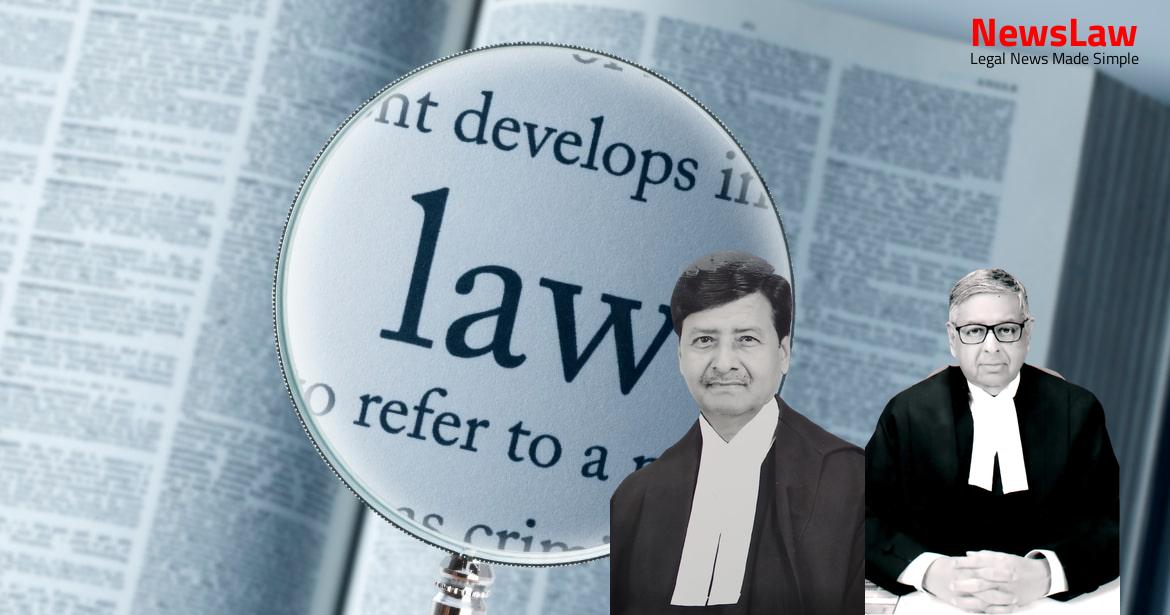A landmark judgment by the Supreme Court of India regarding the environmental impact assessment of the Oriana Residential Project. The case involved the interpretation of the EIA Notification and the implications of granting an amendment to the Environmental Clearance (EC). This ruling will have significant implications for future construction projects under environmental scrutiny.
Facts
- Construction of Oriana Residential Project commenced with an area of 8,720.32 sq m.
- Appellant challenged the decision of the National Green Tribunal in the High Court.
- Environmental Clearance (EC) was required for projects exceeding 20,000 sq m.
- NGT considered the increase in construction area as an ‘expansion’ under the EIA Notification.
- NGT appointed an expert committee to assess the impact of the expanded project.
- Appellant applied for an amendment to the EC due to an increase in construction area.
- Third respondent granted an amendment to the EC citing a marginal increase in area.
- Grant of EC was conditional on obtaining ‘consent for establishment’ from Pollution Control Board.
- The Bombay High Court allowed the writ petition on 12 August 2016.
- Appeal deemed not maintainable by the first respondent.
- Challenge against the grant of the amended EC dated 13 March 2014 was barred by limitation.
- Administrative order on 31 July 2018 transferred the dispute to the Principal Bench of NGT.
- Pune Bench of the NGT rejected applications questioning maintainability and limitation.
Arguments
- Construction of the appellant’s project initially had a total area of 8,720.32 square metres.
Also Read: CRPF Act: Validity of Rule 27 for Compulsory Retirement – Case of Head Constable vs. CRPF
Analysis
- The EIA Notification was adopted to restrict new projects and expansions until their environmental impact is assessed.
- Expansion within the limits set by the Schedule requires compliance with the procedure in paragraph 7(ii).
- Any increase within the Schedule limits does not constitute expansion needing fresh evaluation.
- SEIAA granted an ‘amendment’ to appellant’s EC without following the correct procedure.
- Interpretation of EIA Notification should align with the legislation’s object and purpose.
- A draft notification in 2009 indicated potential changes to the EIA Notification.
- Expansions beyond the ‘threshold limit’ require a fresh EC.
- The project’s increase crossed the lower limit, constituting an expansion, requiring a fresh EC.
- An interpretation allowing incremental increases without proper evaluation would defeat the EIA Notification’s purpose.
- Environmental impact must be evaluated even for marginal expansions.
- Clause (ii) of paragraph 2 requires an EC for any expansion of an existing project.
- Paragraph 7(ii) sets out the procedure for expansion requiring increased production capacity.
- Careful evaluation of environmental impact is necessary for any form of expansion.
- A committee recommended against an amendment allowing expansions within Schedule limits.
- Amending EC without SEAC recommendations raises validity concerns.
- A breach of the lower threshold requires a fresh application even if not breaching the upper limit post-expansion.
- Granting an amendment to the Environmental Clearance (EC) without following the specified procedure in the EIA Notification is not permissible.
- In the case of the appellant’s project, the amendment to the EC was granted without following the proper procedure.
- Construction at the project site had already been completed by the date of the impugned order.
- Proper procedures for amendments to EC must be adhered to even if construction has been completed.
Also Read: DAMEPL vs. DMRC: Curative Petition and Arbitral Award Restoration
Decision
- Construction should not be executed until ample scientific evidence has been compiled to understand the environmental impact of a project.
- By completing the construction, the appellant denied others the opportunity to evaluate the environmental impact and suggest mitigation measures.
- Only remedial measures can be taken at this stage.
- NGT has directed the appellant to deposit one crore and set up an expert committee to evaluate the project’s impact and suggest remedial measures.
- The directions of the NGT are upheld, and the evaluation of the project should continue to minimize its environmental impact towards that of the EC dated 2 May 2013.
- The committee should also suggest compensatory exaction to be imposed on the appellant.
Case Title: KEYSTONE REALTORS PVT. LTD. Vs. ANIL V. THARTHARE
Case Number: C.A. No.-002435 / 2019



